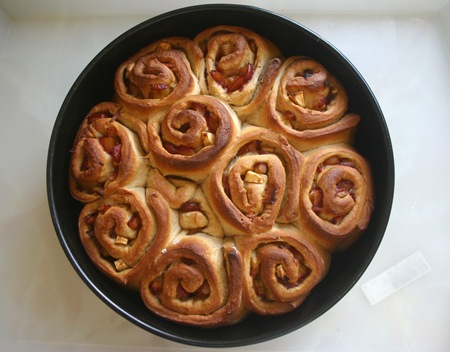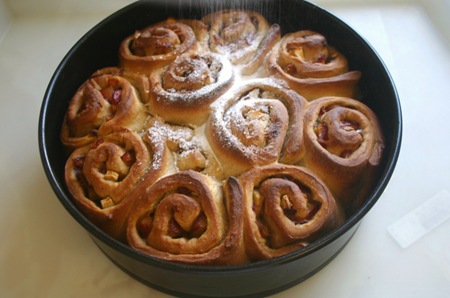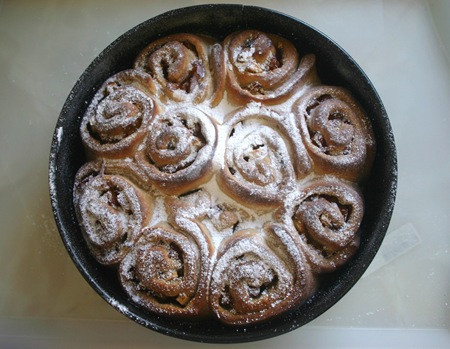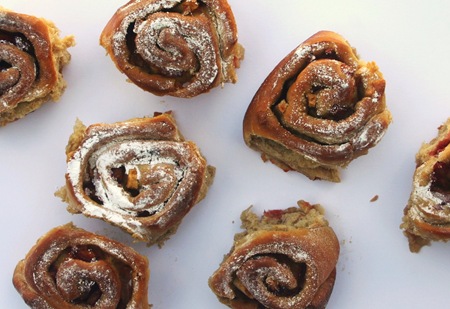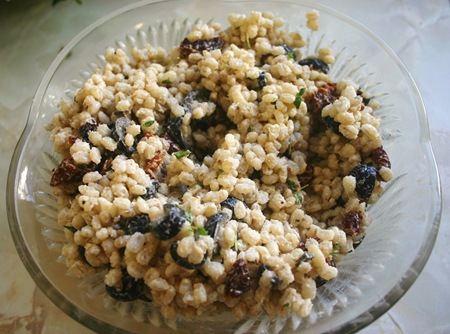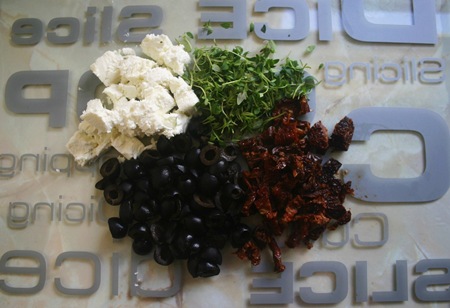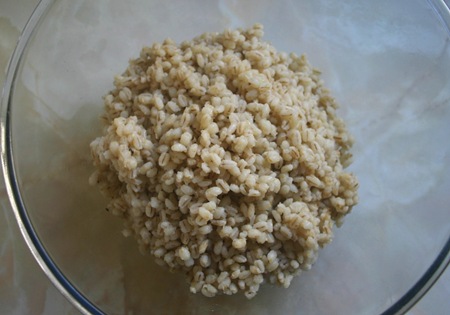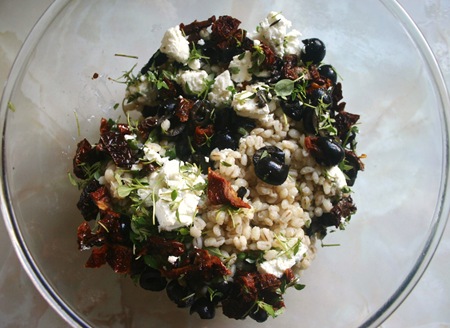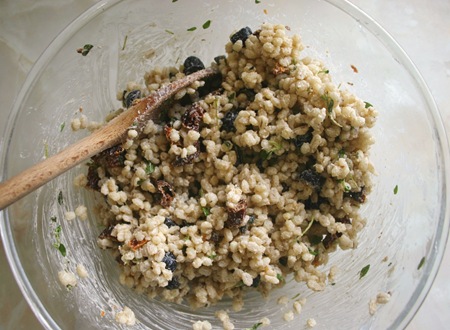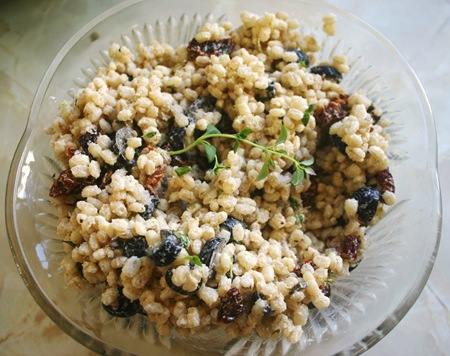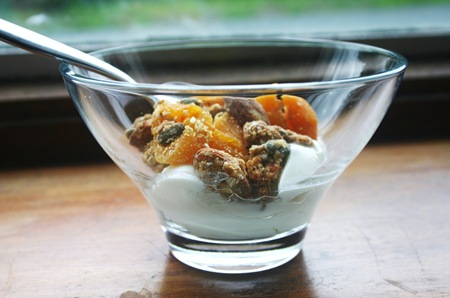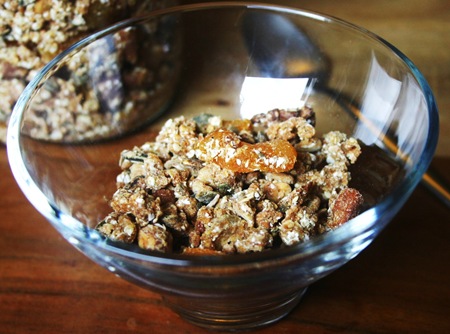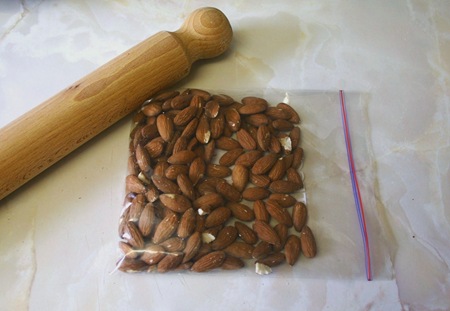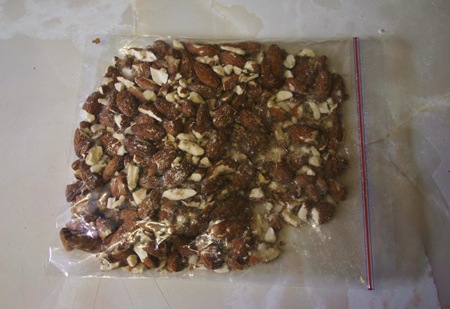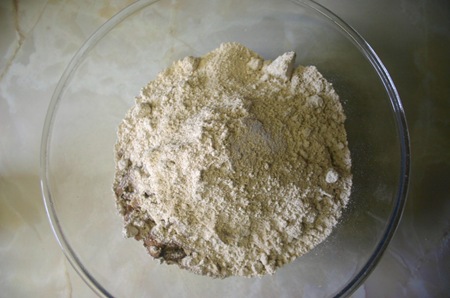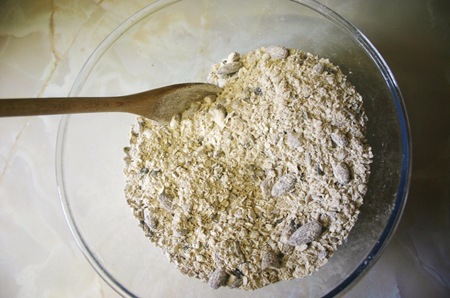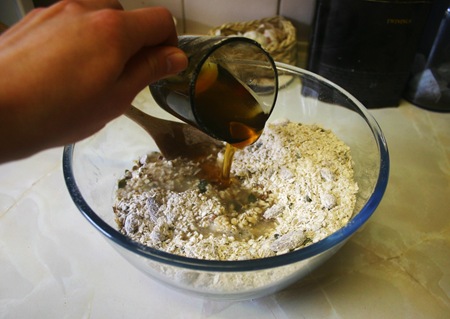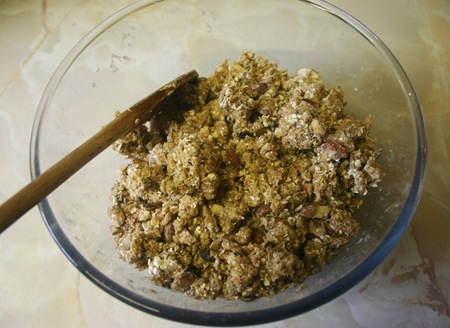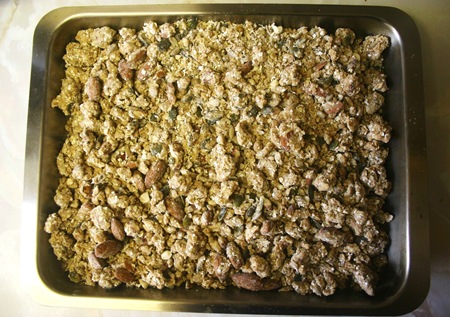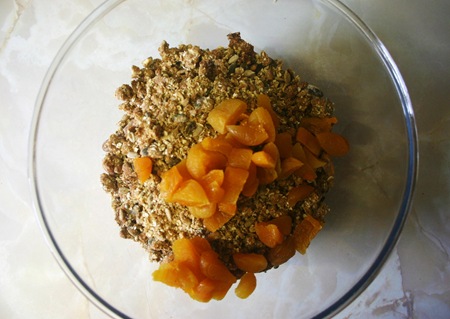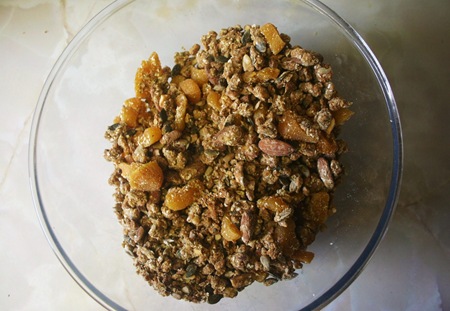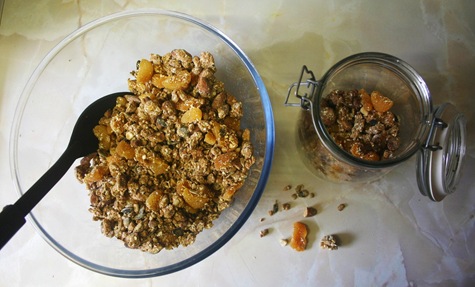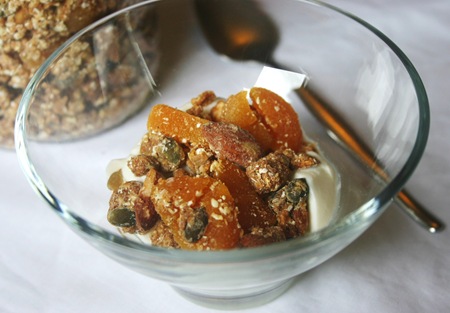
I love this time of year for lots of reasons – the sun’s warmth, the bright days, the blue of the sky, all the colourful flowers, and all the fresh produce. Fresh, free produce, I should say. I have been a fan of blackberry picking for about as many years (and they’re swiftly accumulating) as I’ve lived in Britain. And this year, I have been blessed to be given a big bag of apples and, whilst visiting some family, invited to help myself in a great vegetable garden and little orchard, all in one week. These delicious plums and apples are part of my spoils (with huge thanks to the providers of these spoils), and I wanted to make something special with them.

I pondered making crumble for a day or two (at that stage I only had the plums, the apples arrived yesterday), but it wasn’t quite what I wanted. I considered making plum muffins, or plum and coffee muffins, but again, it wasn’t quite hitting the spot. And then I decided to try make sweet, yeasty rolls with plum bits in the middle…and that seemed perfect. My first attempt at these didn’t work very well as the fruit juice made the dough a bit soggy – or perhaps I was too busy talking to the deliverer of the apples who arrived as I was in the midst of my first attempt (that certainly made me feel on the spot as I took method photos!). However, the rolls produced were still very tasty. For the second attempt, I decided to use apples for some of the fruit (they’re a bit less juicy than plums) and, learning from my mistakes, to try mop up a bit of the fruit juice before adding them to the rolls, and it seemed to go a lot better. If you make them, the fruit juice might still make these rolls a bit sticky but it doesn’t seem to stop the dough cooking properly. If you’d prefer, top them with a simple icing sugar and water, or milk, glaze after taking them out the oven, instead of the straight icing sugar that I (lazily) went for. Don’t be intimidated by the length of the instructions for making these – they actually need relatively little hands-on time and, despite being yeast-based, seem to be fine with very little kneading. The cup measurements below are based on a 250 ml mug for 1 cup (and proportionately less for fractions of cups). This makes about 10 rolls.
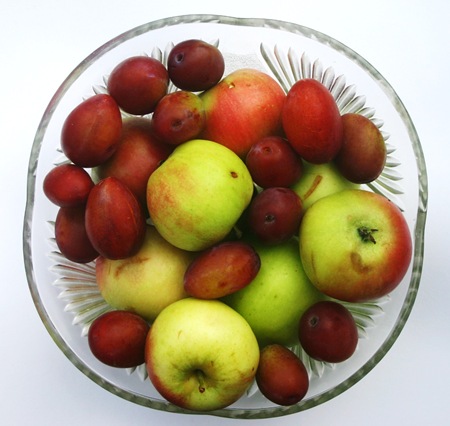
What you’ll need:
2 1/2 cups plain flour
Pinch salt
1/2 cup dark brown sugar
1 level teaspoon cinnamon
7 gram package fast-action yeast
1 cup milk
1 1/2 tablespoons margarine or butter, melted
1 cup chopped plums
1/2 cup chopped apples (with a bit of lemon juice sprinkled over them if you don’t want them to go brown).
Icing sugar, for dusting over the finished rolls
What to do:
1. Put the flour, salt, sugar, cinnamon and yeast in a bowl and mix together thoroughly.

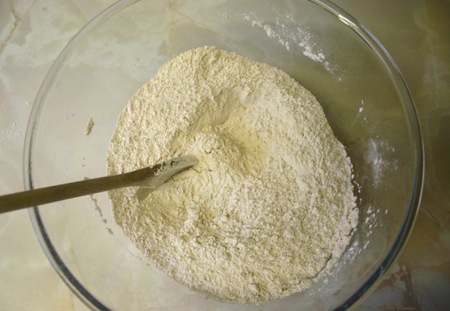
2. Scald 1/2 a cup of the milk (basically heat until just before boiling point – don’t worry if it does reach boiling point – it will still be okay to use), pour the hot milk back into your measuring cup, and top up with the remaining milk to make a full cup. The milk should be lukewarm – if it is too hot, set it aside for a minute or two, or pour a bit of warm milk out of the cup and top it back up to a full cup with cold milk.
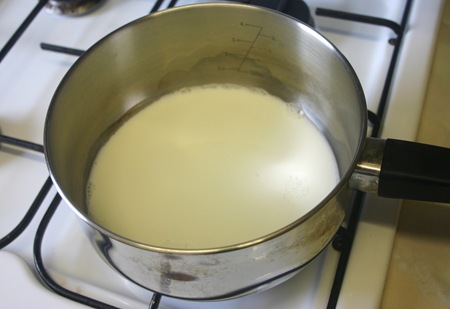 Please imagine the photo of a full cup of milk (thrilling, I know) that should have followed this one. Thank you.
Please imagine the photo of a full cup of milk (thrilling, I know) that should have followed this one. Thank you.
3. Add the milk to the dry ingredients and mix together. Knead for a minute or so in the bowl (don’t be surprised if it is very sticky), and then cover with a clean, damp tea-towel and leave somewhere warm to rise until the dough has at least doubled in volume. This took about an hour for me, but may take less time for you if you leave your bowl somewhere particularly warm.
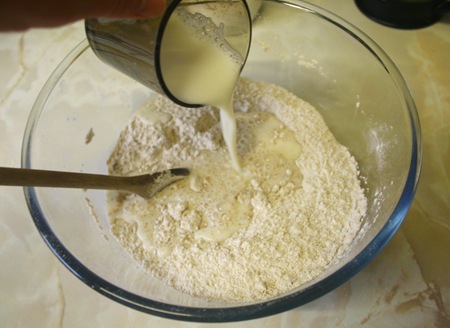
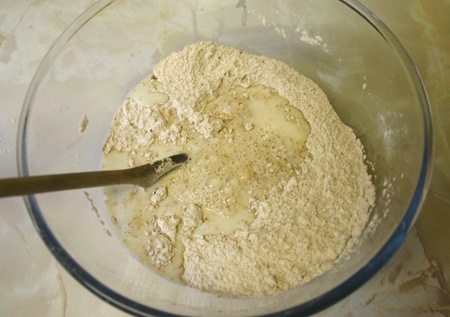
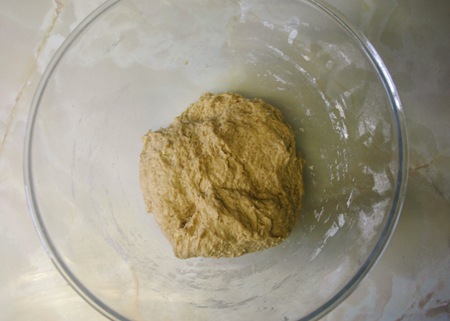
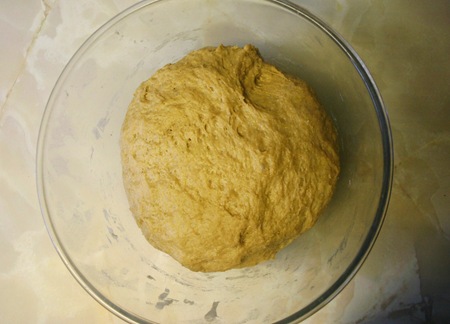
4. When the dough has risen, tip it onto a lightly floured, clean surface, and knead it for four or five minutes. When you’ve finished kneading the dough, roll it out into a long rectangle (you might need to lightly flour the surface again, as well as the rolling pin). It doesn’t matter how long the rectangle is, but it should be about 20 cm wide (a bit more than that is fine) and half a cm deep. Mine wasn’t a perfect rectangle, as you can see from the picture below (the second try was better than the first, but the only photo I had was of the first attempt) – just aim for a minimum width of 20 cm.
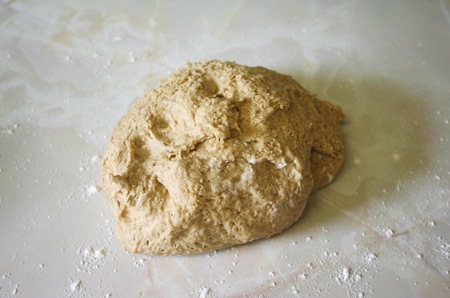
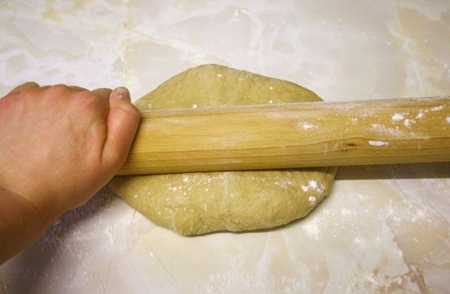
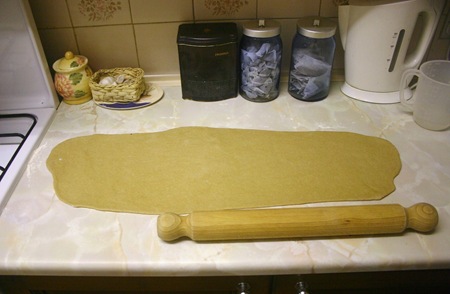
5. Generously brush the top of the rolled out dough with the melted butter or margarine (you probably won’t need all of it).
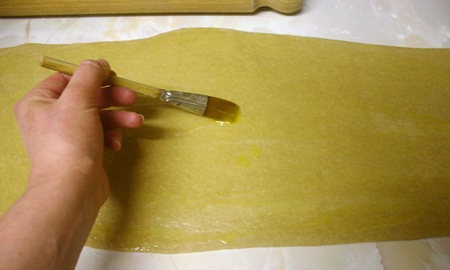
6. Put the chopped fruit on to a couple of pieces of scrunched-up kitchen towel to absorb some of the juice, and then evenly spread the chopped apples and plums across the top of the dough. Leave a space of about an inch at the bottom of the dough free of fruit, to ensure that it will stick together nicely when you roll it.
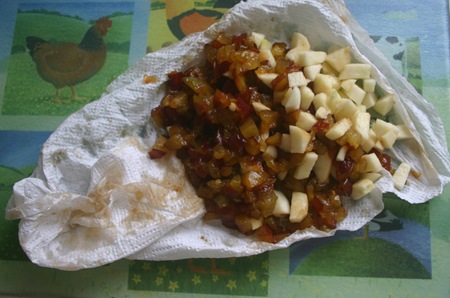
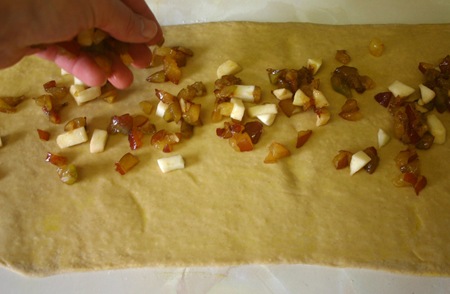
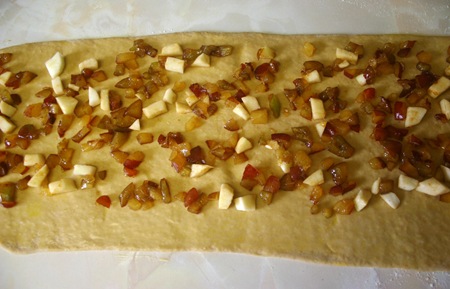
7. Carefully, and tightly, roll the dough along its length. Work length-ways, starting with the end opposite the inch-line without fruit. The easiest way to do this is, using both hands, to roll it just a little way, starting from one end and working to the other end, before going back to the first end and rolling it another bit across its length. As you get to the end of the dough with the inch-long line without fruit, push any stray bits of fruit under the roll with your thumbs as you finish rolling. When you’ve finished, the final thing looks a bit like a long sausage roll that you’ve not yet cut into little sausage rolls. Next, cut off the jagged ends of the long roll, and then cut it into evenly-sized smaller rolls. I cut 10 rolls from my long roll, but the number you get will depend on how wide you cut them.
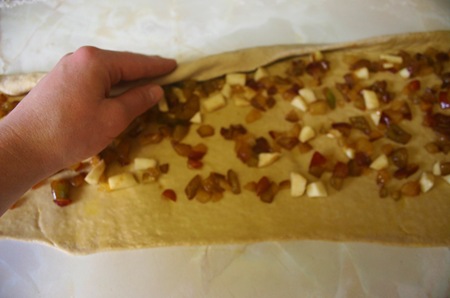 Please ignore the weird-looking hand, despite it being in focus, and focus on the rolling process, despite it out of focus…
Please ignore the weird-looking hand, despite it being in focus, and focus on the rolling process, despite it out of focus…
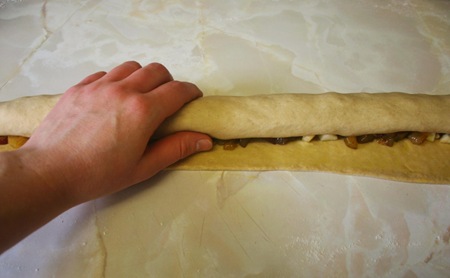
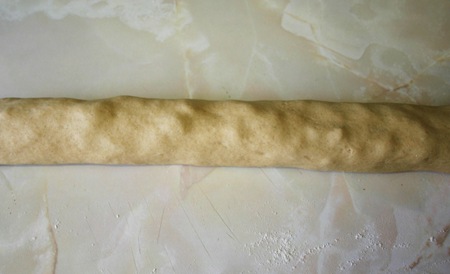
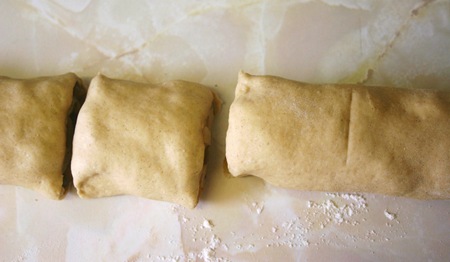
8. Carefully put the rolls in a greased pan (grease the sides and the bottom), with one of the open-sides down (see the picture). I used a round cake tin with a 9-inch diameter, and that was perfect for all 10 rolls and the two end pieces (no point in wasting them!). You might need to push each roll downwards slightly as you put it into the tin so that it doesn’t fall over. Leave at least a centimetre between each roll.

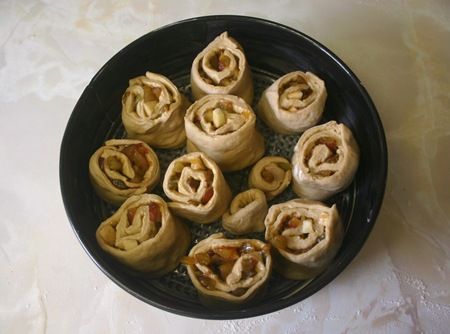
9. Cover the pan with a clean, damp tea towel again and leave to rise for a second time. Again this took about an hour for me, but may take less time for you if you leave them somewhere particularly warm.
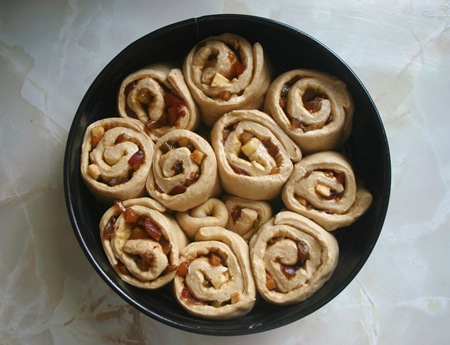
10. When the rolls have risen, pre-heat the oven to gas mark 5 (190º C or 375º F) and then bake in the middle of the oven for about half an hour, or until golden brown on top. When the rolls have baked, take them out the oven and immediately sprinkle them with icing sugar (or a glaze if you prefer), before leaving to one side to cool (I cooled mine in the tin and that seemed to work without a problem).
